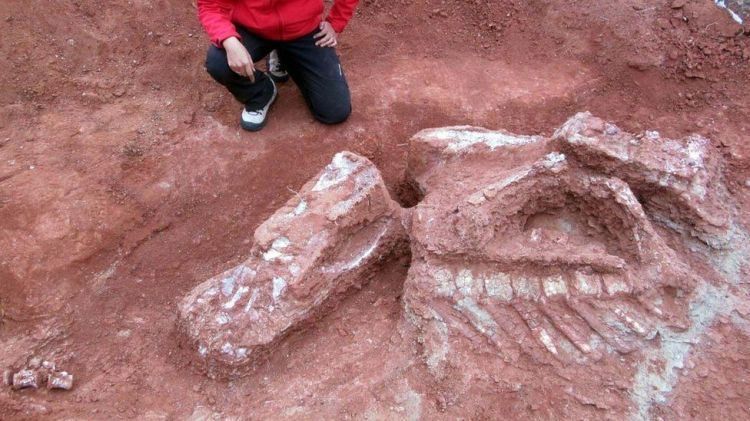
Stardate 3417.3. The Enterprise has arrived to the planet Omicron Ceti III to catalog the destruction suffered by an agricultural colony stablished in 2264. It was assumed that the colonists are dead because the planet was bathed in Berthold rays, a lethal form of radiation. Although there was no sign of animal life on the planet, the colonists were found alive and in excellent health. Mr. Spock, intrigued about the survival of the colony, is conducted by Leila Kalomi, a botanist he had met six years prior on Earth, to a field with very strange flowers which expelled some spores into his face. Spock begun to feel sick, and after a brief agonizing struggle, he smiled and confessed his love for Leila. Like Spock, all the members of the Enterprise that were exposed to the spores changed their behavior. The only one who resisted the effect of the spores was Captain Kirk.

Spock with Leila Kalomi (Image: CBS)
The key elements for the colony survival were the spores. The term ‘spores’ derived from the Greek word for seed. In a broad sense, spores are the reproductive structures of bacteria, fungi, algae, protists and land plants, adapted for dispersion and surviving for extended periods of time during unfavorable conditions.
The colonization of land by vascular plants in the Paleozoic was one of the most significant events in Earth’s history. We could hypothesize that terrestrial colonization was not possible prior to the evolution of the sporopollenin spore wall, and this adaptation is considered to be a synapomorphy of the embryophytes. Sporopollenin is the major component of the spore (and pollen) wall. This highly resistant biopolymer occurs in certain charophyceans, but is located in an inner layer of the zygote wall.

Cryptospores from the Early Middle Ordovician of Argentina (From Rubinstein et al., 2010)
Like their algal ancestors, all plant life cycle goes through both haploid (gametophyte) and diploid (sporophyte) stages. In vascular plants, the sporophyte generation predominates. The sporophyte produces the spores, which contain only a single copy of the chromosomes. The earliest dispersed spores attributable to terrestrial plants, termed cryptospores, are known from the Middle Ordovician. Cryptospores are believed to have been produced by bryophyte-like plants, but recently, they were interpreted as the product of a diverse group of mostly extinct plants, whose precise affinities to living clades remain unclear.

C. barrandei sp. nov., from Czech Republic (scale bar, 10 mm). From Libertín et al., 2018.
The description of Cooksonia barrandei (432 my, Czech Republic) shed light on the origins of the alternation of generations in land plants. The genus Cooksonia (named in honor of Isabel Cookson) is generally accepted as the oldest land plant, with a broad distribution in the Late Silurian and Early Devonian periods, including North America, North Africa, Europe, Asia and South America. Cooksonia barrandei (the species name is honoring Joachim Barrande, a famous French palaeontologist who lived in Prague), and is five million years older than the oldest previously described cooksonioids (427 mya). The plants were isosporous (produced only one kind of spore) and of small size, with a bent, isotomously branched axis with terminal branches completely preserved.
Star Trek has been a cult phenomenon for decades. The Original Series premiered on September 8, 1966, and has spawned five successor shows starting in the 1980s and several feature films , comic books, novels and an animated series. Star Trek also influenced generations of viewers about advanced science and engineering. “This side of Paradise” remains as one of the best episode of Star Trek. It was premiered on March 2, 1967. The title was taken by the final line of the poem “Tiare Tahiti” by Rupert Brooke: “Well this side of Paradise! …. There’s little comfort in the wise.”
References:
Libertín, Milan; Kvaček, Jiří; Bek, Jiří; Žárský, Viktor & Štorch, Petr (2018), “Sporophytes of polysporangiate land plants from the early Silurian period may have been photosynthetically autonomous”, Nature Plants, 4 (5): 269–271, doi:10.1038/s41477-018-0140-y
Rubinstein, C. V., Gerrienne, P., de la Puente, G. S., Astini, R. A., & Steemans, P. (2010). Early Middle Ordovician evidence for land plants in Argentina (eastern Gondwana). New Phytologist, 188(2), 365–369. doi:10.1111/j.1469-8137.2010.03433.x










